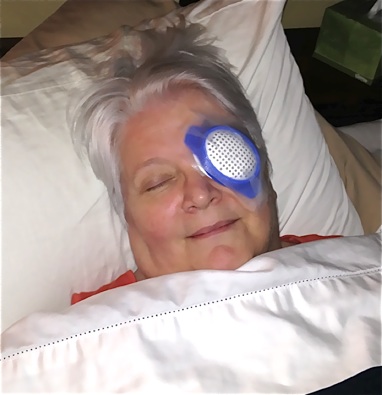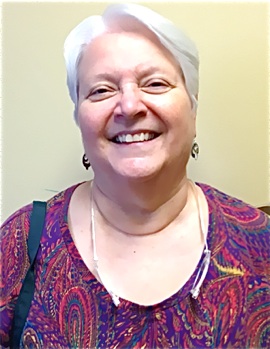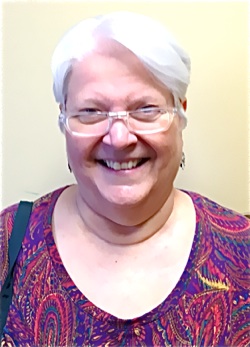I Can See Clearly Now
How well can you see? I've been blessed with above average (or at least correctible) vision my whole life - even at the advanced age of early 60's-ish. Apparently such is not the case with a significant portion of the population. I'm always surprised when confronted with this fact.
Many years ago when we were still young, my sisters were living together and went to the optometrist. After the examination, my older sister was talking to the doctor when he mentioned that the results were quite different between the two. When asked to explain he replied, “If you looked at a crack in the wall, you would say, 'That crack looks fuzzy to me.' while your sister might say, 'What wall?'”
I didn't start wearing glasses until I left home for college, and by then it was my choice, my money. Sadly, many children grew up hating glasses because of the “four-eyes” taunts of their less-enlightened classmates. My father was one of those - the taunted, not the taunter. He hated having to wear glasses, but to do without was painful. However, during an extended illness in his mid-forties, he spent so much time in bed without his glasses, he got used to doing without. He enjoyed his newfound freedom so much, he vowed never again to become a slave to glasses, although he carried them with him for those occasions that required reading.
Several years ago I lived in a town that was home to several of my college band mates. The 70's were an historic time for this band program, and the beloved band director still lived nearby. When they decided to hold a reunion of this era and honor the band director, I was asked to help out at the check-in table. I was glad to help out, see some friends from days gone by, and free up some of the other celebrants to participate in the activities. What I was not prepared for, though, was seeing several very nice looking ladies that were my age who apparently placed much more importance on what they looked like than what they could see. Time after time when I asked them to sign in, I was told, “You can sign in for me. I don't have my glasses on and can't see a thing!”
Vision correction has come a long way over the decades. Frames are much more stylish now, and if you can stand to poke your finger in your eye you might be a candidate for contact lenses. Lasik surgery on the eyeball has dramatically improved vision in many people. However, the procedure of which I am currently in awe is cataract surgery. In the past few months my wife has had this surgery on both of her eyes; thus, I am now an expert on the subject.
Ideally, the lens in an eyeball is clear. However, when the lens becomes cloudy, this is called a cataract. This is most common in the elderly, but can happen earlier for a number of reasons. As in the case of my child-bride (she's 366 days my junior), mild diabetes is probably a factor. The ophthalmologist identified her cataracts years ago but held off on the surgery because they weren't quite “ripe.” Bev has been looking forward to this major correction in her vision for some time now and was over-joyed last fall when told, “It is time!”

The process of correcting cataracts is fascinating, if a bit gross. FYI: there is no optical Windex with which to clean the cloudy lens. Instead, they smash it to smithereens, then suck it out, replacing it with a man-made lens suited to your particular ocular needs. Beverly's body is now part bionic. [Can you say, “We have the technology!!” or maybe, “Resistance is futile!”?] She was issued an ID card for each artificial lens.
The first operation was on the left eye, always the weaker of the two. I brought her home mid-day looking like some form of mutant with a large blue patch taped over her left eye. I was too kind to verbalize all the descriptors that applied, until we reported to the doctor's office the next morning. The waiting room was full of similarly blue-eye-patched patients. “Looks like we're here for your club meeting,” I said. She almost smiled.

When the patch came off, the doctor immediately tested the new eye on a standard eye chart. Bev said the top line looked like a musical staff, but, of course, it was an E. That's normal, though, so we returned home and started the regime of drops in the eye four times a day. Her vision started improving greatly, but not as fast as hoped. After two days of still blurry vision, she decided that the operation was a failure and that she would never see clearly again. Fortunately, such was not the case, and in a couple of weeks she enjoyed better-than-ever vision in that eye. The doctor measured it at 20-25; not perfect, but much better than before. This created an awkward situation with her prescription glasses. She still needed the correction in the right eye, but the left lens was now a serious detriment to the “new” eye. We replaced the left lens with clear glass. This worked great, except outdoors where the prescription lens was photo-gray and the clear lens was not. Still, it worked.
Once the left eye cleared up, she could hardly wait to have the other one done, and three months later we repeated the process on the right eye. When the second patch came off, she could actually read the top three lines of the eye chart! She loves her “new” eyes and can read street signs with much greater ease than before. Unfortunately, the cataract surgery does much more for the distance vision than it does for close work, so Bev is now a proud member of the Reading Glasses Only club. I like reading glasses (for her), too, because they're cheap! The first pair we bought even greatly resembled her prescription glasses.
One day in the first week after the second surgery, I was dutifully administering the drops after lunch, and she asked me to fetch her glasses so she could read. I had seen them earlier in the kitchen, which was somewhat puzzling since that's not where she usually puts them, but I took them to her. Shortly after that, she began experiencing problems with her eyes - she couldn't see to read! She put some artificial tears in the left eye and enlarged the print on her iPad to facilitate the reading. She was not yet cleared to drive, so I took her back to the office. She complained to the secretary all afternoon how difficult it was to read, all the while enlarging the print on her computer whenever possible. Through all of this, she came to the only logical conclusion: the surgeries had failed and she was surely doomed to a life of near-blindness. When I went to pick her up, she walked out to the car, got in, and noticed that one of the lenses on her glasses was getting dark in the sunlight. Her readers were not photo-gray, but her old prescription glasses were! Relief and laughter soon followed when she realized that I had ACCIDENTALLY given her the wrong glasses! All was good again. (whew!)
Now she sports some fancy readers that break apart at the nose when not needed and reattach (with magnets) when needed. They're available at Amazon.com and come in a variety of colors - not as cheap as the drugstore, but not bad.


Beverly does a kids devotional with the 3 - 5 year olds at our Day School each Wednesday. I have seriously underestimated the observational powers of preschoolers, because the first time she met with them after the second surgery, one of the first questions she was asked was, “Where are your glasses?” And, of course, a week or two later they loved the new readers that broke apart!
The older I get the more grateful I become for the things I can still do. Needless to say I already play the obituary game to see how many of the deceased were younger than me - not the most comforting game, by the way. I can't complain too much about getting old, because we all know what the alternative is. I've always heard that the first three things to go as one ages are vision, hearing, and…. I can't remember the third one, but at least I can still see!
enough





